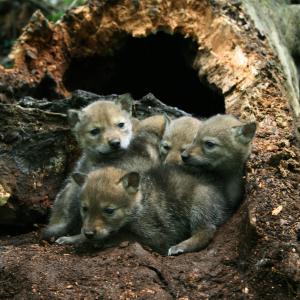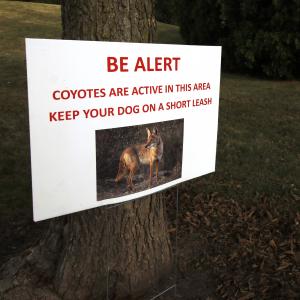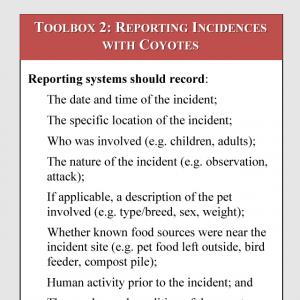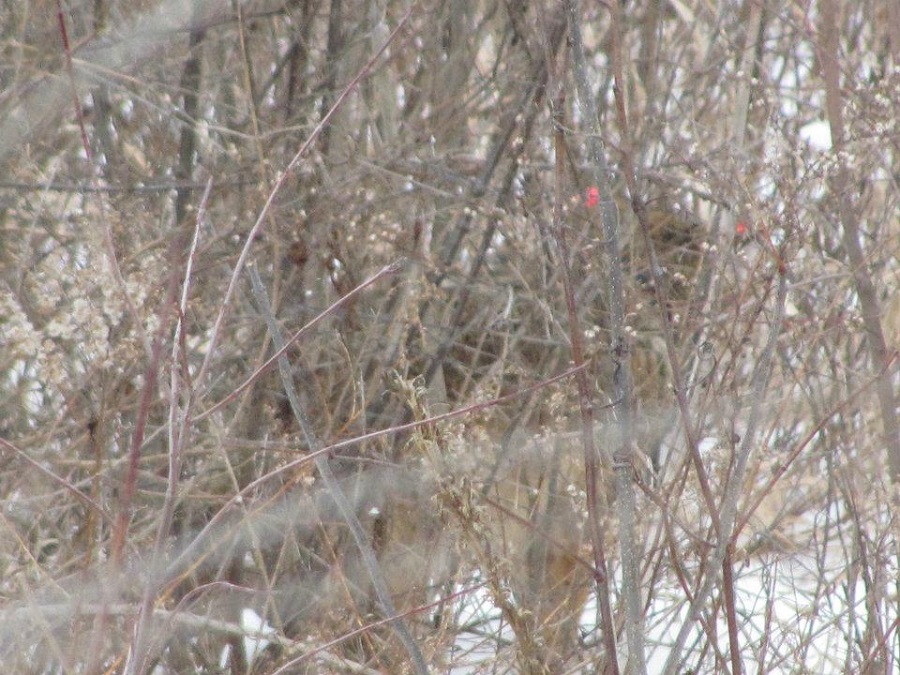
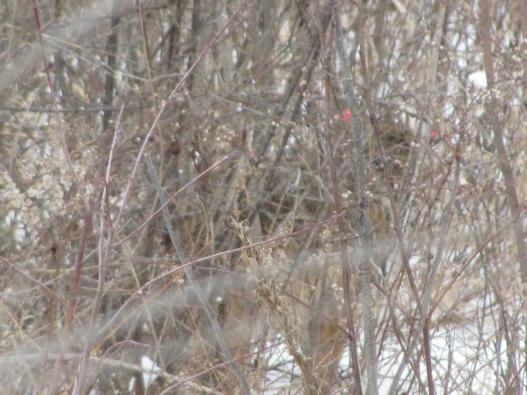
Can you spot the coyote?
Coyotes are common throughout most of the Chicago region, and radio-tracking data demonstrate that people and coyotes coexist on a daily basis, with people usually unaware of the potential for interactions. A few individuals can sway people to believe that coyotes are bad, while the majority of animals go about their lives without ever being seen.
A synthesis of results from the Chicago metropolitan area produces a portrait of a coyote that appears to benefit from the urban landscape through enhanced survival and possibly elevated population densities, while also exhibiting strong spatial and temporal avoidance of humans by consistently avoiding developed portions of the landscape and shifting activity patterns to nighttime hours.
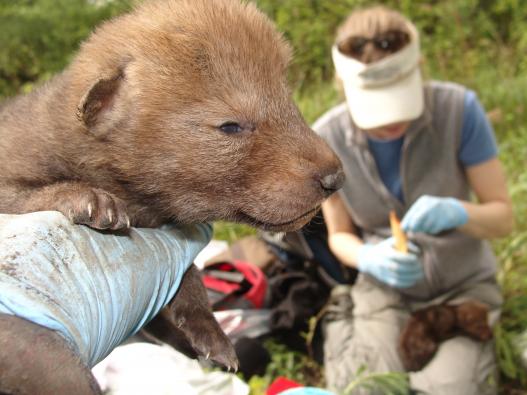
Studying year after year always yields new questions - and new babies.
Major Implications
- As a top predator, coyotes are performing an important role in the Chicago region. Increasing evidence indicates that coyotes assist with controlling rodent, deer, and Canada goose populations.
- Coyotes in urban environments switch their activity patterns to be more active at night when human activity is minimal.
- Most coyotes are feeding on typical prey items, such as rodents and rabbits, and generally avoiding trash.
- Wildlife feeding will eventually habituate some coyotes, leading to conflicts.
- Coyotes appear to be monogamous.
- Coyotes are exposed to a wide range of diseases; however, to date, none of them pose a serious human health risk. In general, the coyote population appears to be relatively healthy.
- Effective control programs target nuisance coyotes, rather than targeting the general coyote population. Coyotes removed through lethal control efforts or other causes are quickly replaced.
- There are individuals who exhibit dangerous behavior that sometimes should be removed from the population.
- Successful management programs include public education and outside consulting.
- Some types of repellents, such as electronic devices employing lights and sound, may be useful for preventive control of coyotes, but more work is needed to evaluate their effectiveness and other hazing techniques.
Despite the importance of natural habitat for coyotes, some individuals are capable of maintaining territories in portions of the landscape with minimal or no natural areas and elevated human activity. However, coyotes, as a general population, consistently avoid areas associated with humans, regardless of their sex, social status (i.e. resident or transient), activity period (i.e. daytime or nighttime), or the amount of urban development within their home ranges.

